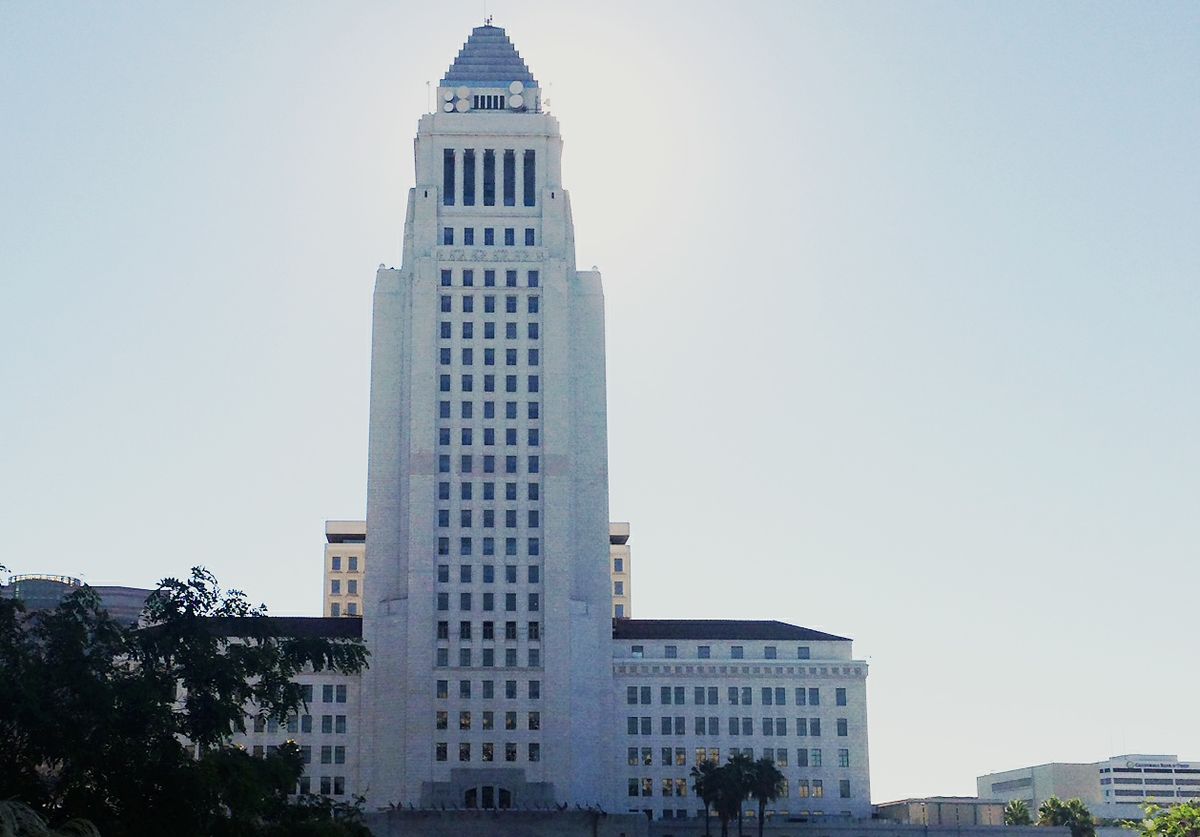Using UCLA environmental research, the Los Angeles City Council unanimously passed a motion Dec. 3 to develop a program to improve energy and water conservation efforts in city buildings that consume the most resources.
The ongoing UCLA research expands on a first-of-its-kind interactive electricity map of Los Angeles and an analysis of water-conservation motivators, and a preliminary analysis found that 4 percent of buildings in Los Angeles use almost half of the city’s energy. The City Council motion will convene stakeholders — including building owners and managers, city agencies and non-profits — who will use the UCLA research to consider, among other things, how to encourage conservation by the biggest energy and water users for the broadest possible impact.
The Los Angeles Mayor’s Office approached researchers from the California Center for Sustainable Communities at UCLA’s Institute of the Environment and Sustainability after their energy map came out in 2013. City Councilmen Jose Huizar and Bob Blumenfield, seconded by Councilman Paul Koretz, presented the resulting motion that appeared before the City Council Wednesday. The council heard from lead researcher Stephanie Pincetl, director of the California Center for Sustainable Communities and an expert in urban environmentalism and California land use policies.
“Our data can help locate the sweet spot where you’re targeting a lot of energy consumption without wasting resources targeting a lot of buildings,” Pincetl said. “Our research shows the value of having more energy consumption data, and how having more detailed data can help reduce energy and water use.”
The center’s research is part of UCLA’s Grand Challenge Project, which aims to move the county to renewable energy and local water by 2050 while protecting biodiversity. Under the Grand Challenge umbrella, the center’s electricity map project is being expanded to include electricity and natural gas consumption data for Los Angeles County, and later, water data. This research generates greater understanding of the relationship between energy use, socio-demographic characteristics, and land use, said Kristen Holdsworth, project manager with UCLA’s California Center for Sustainable Communities and a member of the research team.
“Our research points us in the right direction by showing the actual landscape of Los Angeles in terms of water and energy use now, so we can chart the best course,” Holdsworth said. “The city is trying to figure out how to reduce energy and water use in buildings that are really inefficient. Our research helps identify the types of buildings that need to be targeted.”
The UCLA research has informed and guided the discussion to launch the city’s effort to unite stakeholders, who will develop a program to increase existing buildings’ energy and water efficiency. The motion before the city council cites the UCLA findings that just 4 percent of buildings consume half the city’s electricity.
“A strategy to help reduce energy consumption for these major users of energy could provide proportionately high returns for the city’s conservation and sustainability goals,” the city motion states. “Policies and programs to address energy and water efficiency in existing buildings could include financing support, incentive programs, regular benchmarking and performance tracking, and an expansion of the Los Angeles Better Buildings Challenge.”
UCLA research helps guide L.A. City Council as it develops conservation policies
The city will convene stakeholders to improve energy and water conservation in resource-wasting buildings




